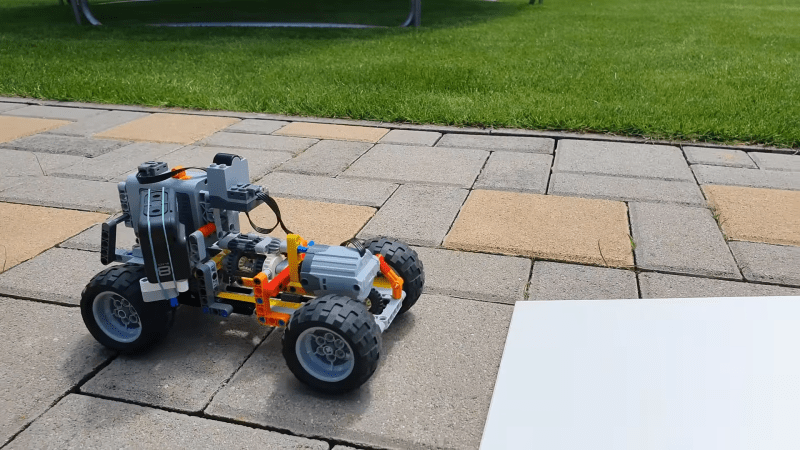The automatic transmission in your average automobile can be a complicated, hydraulic-y thing full of spooky fluids and many spinning parts. However, simpler designs for “automatic” gearboxes exist, like this Lego design from [FUNTastyX].
The build is based around a simple open differential but configured in a unique way. A motor drives what would typically be one of the output shafts as an input. The same motor is also geared what would normally be the main differential input shaft as well. In these conditions, this double-drive arrangement would sum the speed input and lead to a faster rotational speed at the other shaft, which becomes the output.
However, the trick in this build is that the drive going to what would be the usual differential input is done through a Lego slipper clutch. This part, as explained by [TechnicBricks], allows the outer teeth of the gear to slip relative to the shaft once torque demand is exceeded. What this functionally does is that when the output of the “automatic gearbox” is loaded down, the extra torque demand causes the clutch to slip. This then leads to only one input to the differential doing any work, changing the gear ratio automatically.
It’s likely not a particularly efficient gearbox, as there are significant losses through the very simple clutch, we suspect. However, it does technically work, and we’d love to see its performance rated directly against other simple Lego gearbox designs.
It’s a little confusing to explain in text, but the video from [FUNTastyX] does a great job at explaining the principle in just a few minutes. We’ve seen plenty of crazy Lego gearboxes over the years, and we doubt this will be the last. Video after the break.















That’s brilliant.
But pointless, since the friction clutch is eating up half the torque to keep it in low gear. Hence the bigger motor.
Friction clutches are notoriously unreliable. They are really only intended for occasional use, to prevent overload for example. In continuous use they will fail.
Very interesting!
One combustion engine on one input and a electric motor on the other and you have Toyota’s PSD variable transmission
Well, two electric motors, but yes, that’s what I was thinking. Here’s an excellent video on the second generation hybrid driveline. Prof. John Kelly at Weber State U has some genuinely _excellent_ videos on how these, gen 3 and 4, and several other interesting drivelines work: https://www.youtube.com/watch?v=ZmHpSyTsfm0
like the idea… need to try antoher one with panetary gears
Where do people find these odd Lego parts? Is there a catalog or something? I scoured the Lego web site and didn’t find anything like that. I’ve seen third party web sites with some detail, but nothing that seems standardized. Also, when I see someone building a project like this transmission thingy, I would fully expect to see a Bill of Materials (BOM) with part numbers. But nope, I don’t see that. If anyone knows the answer to this, please enlighten me. Thanks…
Bricklink.com